Moscow bus back and did not go away
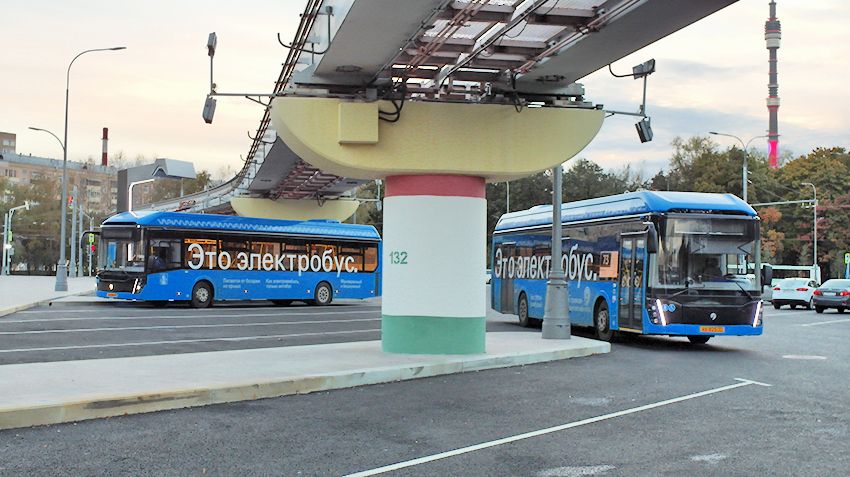
1 October 2018
Moscow through the eyes of bus passenger
Yesterday, September 30 in Moscow ended the first month of operation electrobus on a regular Metropolitan routes.
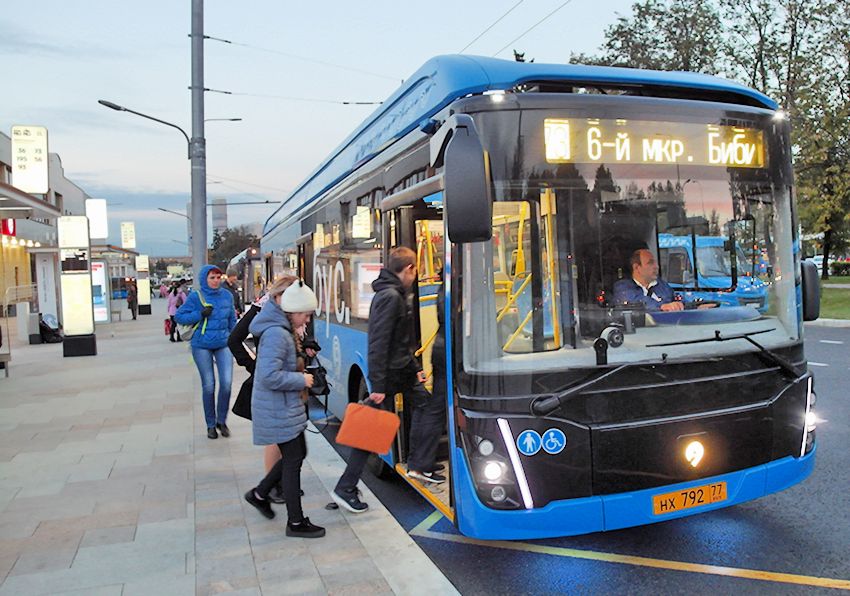
Passengers of the Moscow route number 73 is already quite accustomed to the buses (especially free)
since the launch of the buses began in September is not without problems, it was interesting to watch as is the case with this promising form of transportation in a month.Operation of buses while going on a route №73 "exhibition center (South hall) – 6th district of Bibirevo", tE. trolley, along with the usual trolleybuses. On the route I counted about six cars (and even one electric bus has already gone into the Park).
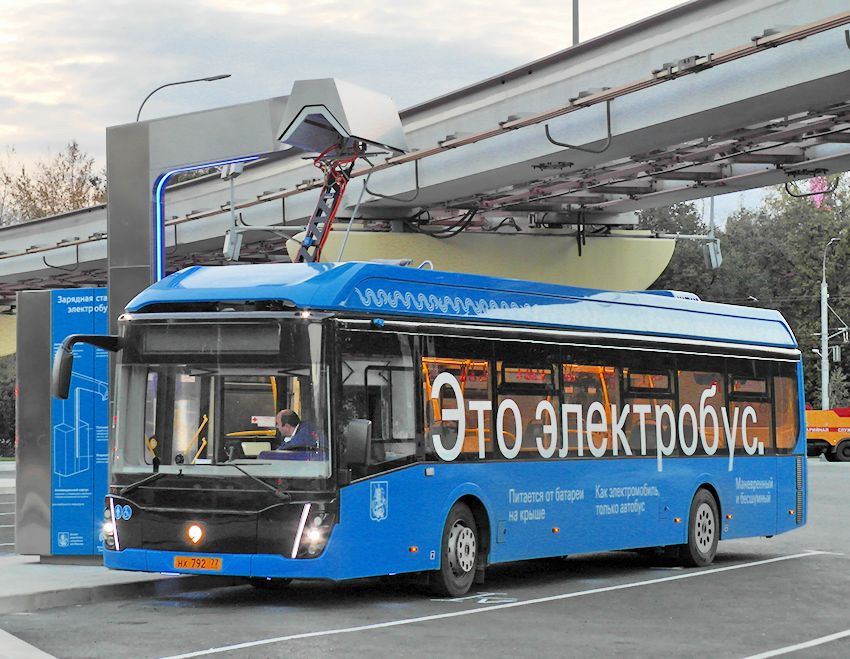
For fast charging of electric buses in Moscow scheme is applied with popupentername
The charging station of buses located near the exhibition center (South) under the freeway monorail and the target site in the Vologda travel. The turnover there and back is about 85 minutes of pure drive, plus 15 minutes to recharge – a total of ~100 minutes or 1 hour and 40 minutes.
When charging stand is "fast" recharging station is on the blue color
Interestingly, when charging the driver several times raised and lowered Polupanova (which looks particularly spectacular at night when the arc changes color from white (no charging) to blue (charging is on) and back. Recharge time is 10-15 min. I Wonder how reliable and long lasting is this charging with the onset of slush and frost.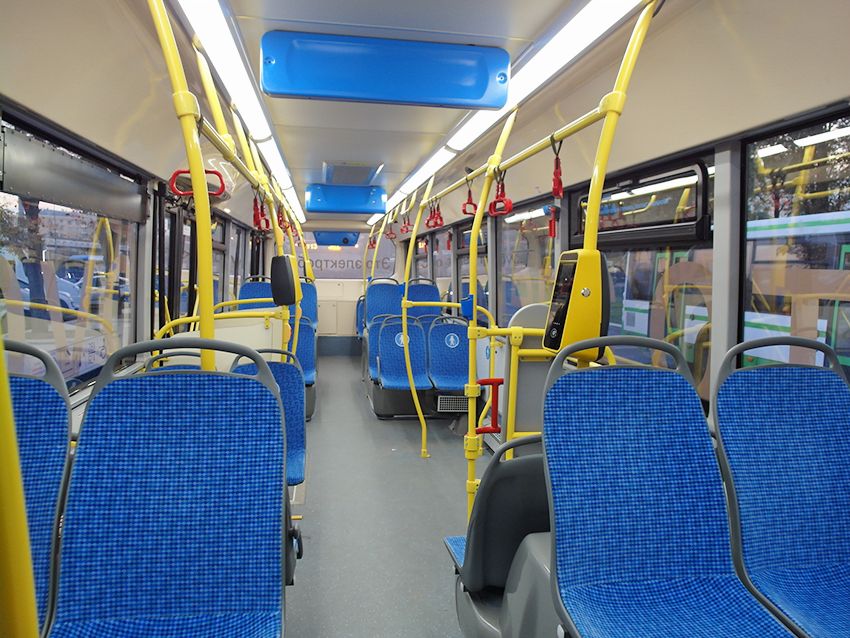
Bright and spacious, fully low-floor cabin of the electric bus LiAZ-6474
Inside the bus is very similar to the original design of the bus LiAZ-5292, but there are significant differences in layout: first, there is no mine behind the engine compartment, which replaced the inclined shelf along the rear side.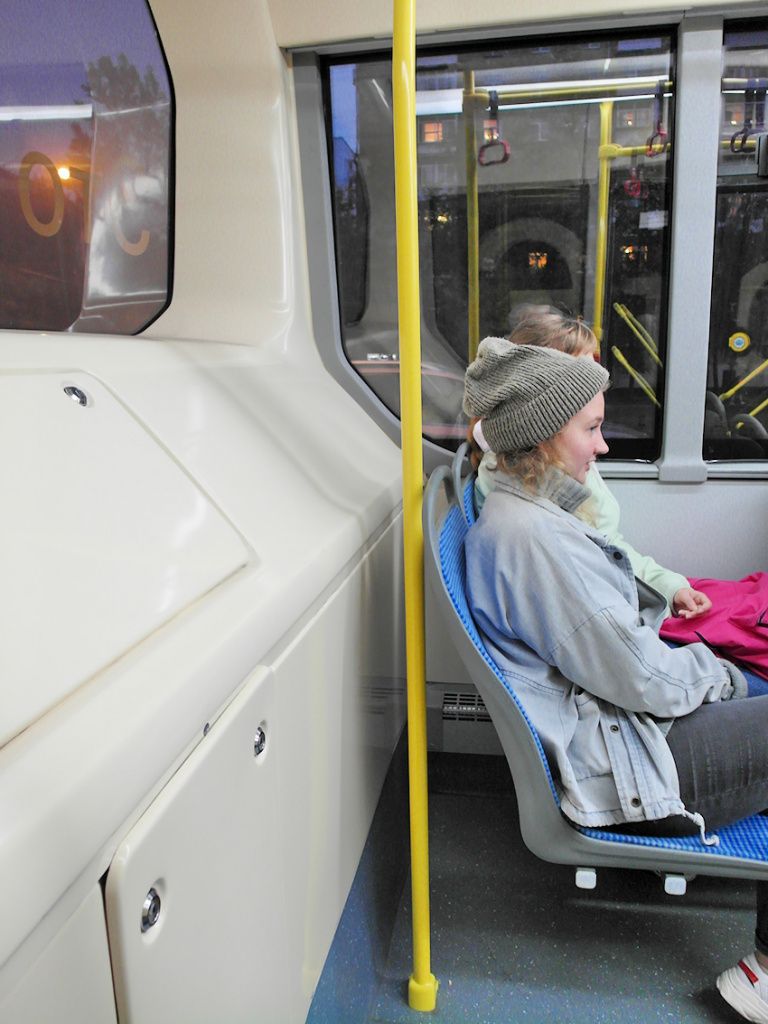
Mine is the diesel engine in the bus back rather compact shelf
Hence, there is no raised "balcony", and the seats are located at floor level, i.e., machine, low floor throughout, which of course is even more convenient for elderly passengers and passengers with children.
The passage between the rear rows of seats are quite spacious and comfortable as the entire length low-floor
On the racks there are two hub with two USB ports (2.1 A, 5V) for charging smartphones and other gadgets (a thing easy, if your mobile phone is dead, and to call urgently necessary).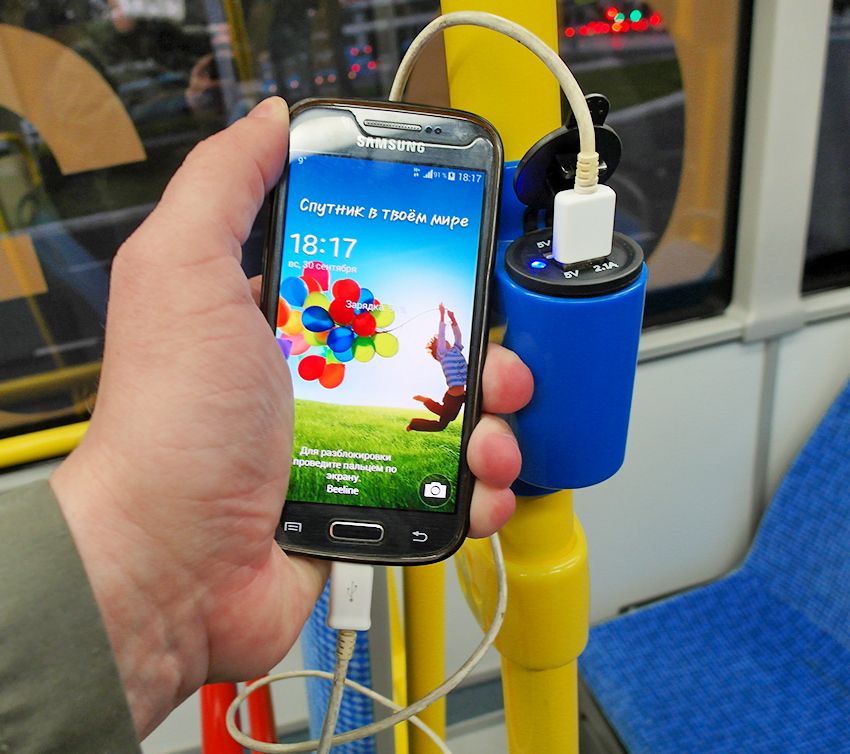
There charge!
Frankly, ordinary passengers do not even notice the difference with the regular bus or trolley, and a month of free use of special made no impression, so literally every second passenger carefully put his transport card "Troika" to disabled while the validators. From today (01.10.2018) are the validators in the buses in normal mode Moscow ground transport.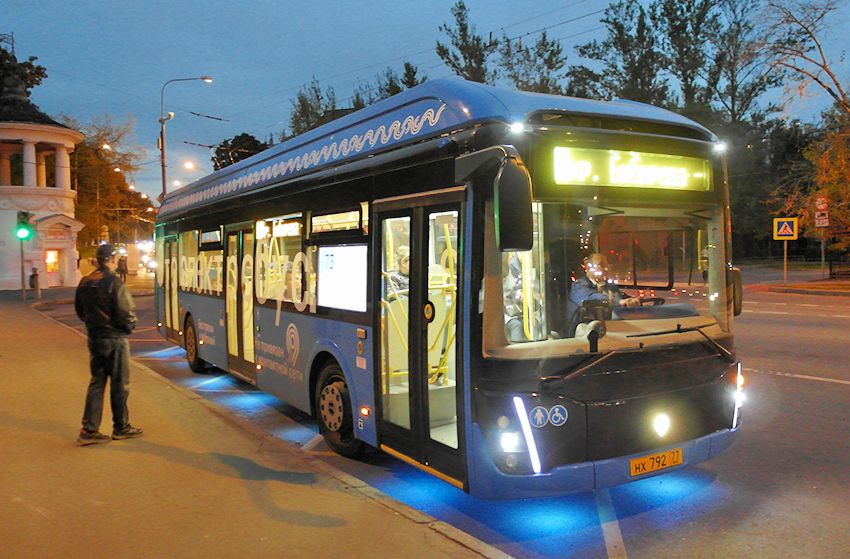
Passengers despite the highly visible illumination and the schedule of buses from other kinds of public transport often do not distinguish
In the cabin of the electric bus is quite comfortable, very light and warm enough, a great in-car information display (except that all three scoreboards deployed in the course of movement, so that incoming passengers the information on them is not visible), which even surprised – i.e., the energy of the driver is not particularly saves. The dynamics of the electric bus is even better than the bus and is comparable to the trolley.
Scoreboard in-car route indicators are good, but only facing in one direction
The noise level in the cabin is also lower than the bus and even the bus, although a few specific – when accelerating there is a whine, like a turbo, but the overall noise level is still considerably lower than in the similar purpose and size of vehicles. When sufficiently long stop in traffic or at landing-disembarkation of the driver, in General, suppresses the power grid and the cabin silence reigns what is achievable so far only in the tram.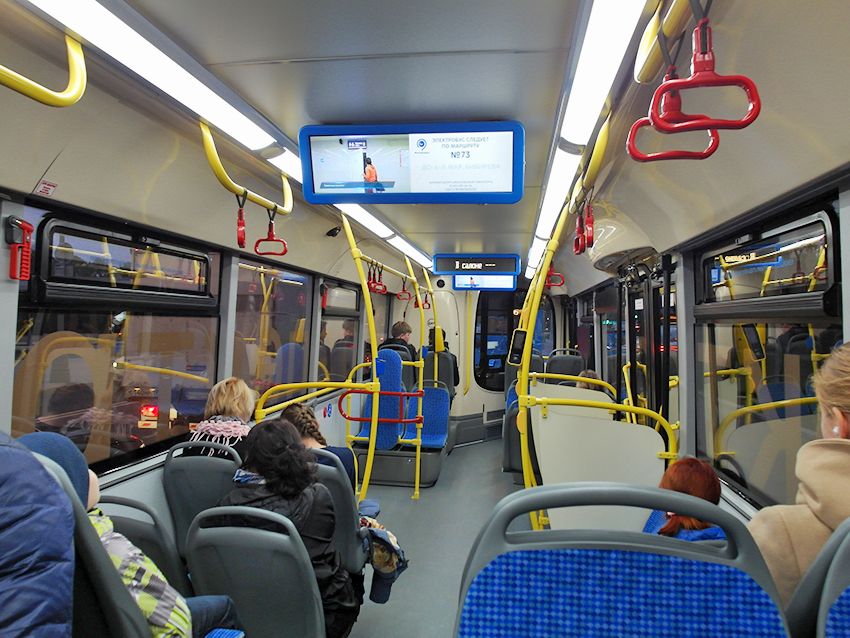
In the cabin of the electric bus is light, warm and quiet
So, in this sense, the promotion into the 21st century it is quite noticeable so to speak "at the level we have feelings." On the way back we caught an empty bus, when he stopped at a traffic light nearby, happened to hear a rather amusing dispute between the drivers about who gets passes to the charging station (from which it follows that while at VDNKH there is only one of them) due to the fact that the Manager is one of them promptly changed the schedule. At least the conversation drivers elektrobosna between them was quite friendly, so we can hope that all the childhood diseases of this mode of transport will be eliminated quickly and painlessly.So, the buses are gradually beginning to enter into the lives of residents of the capital and not only one.
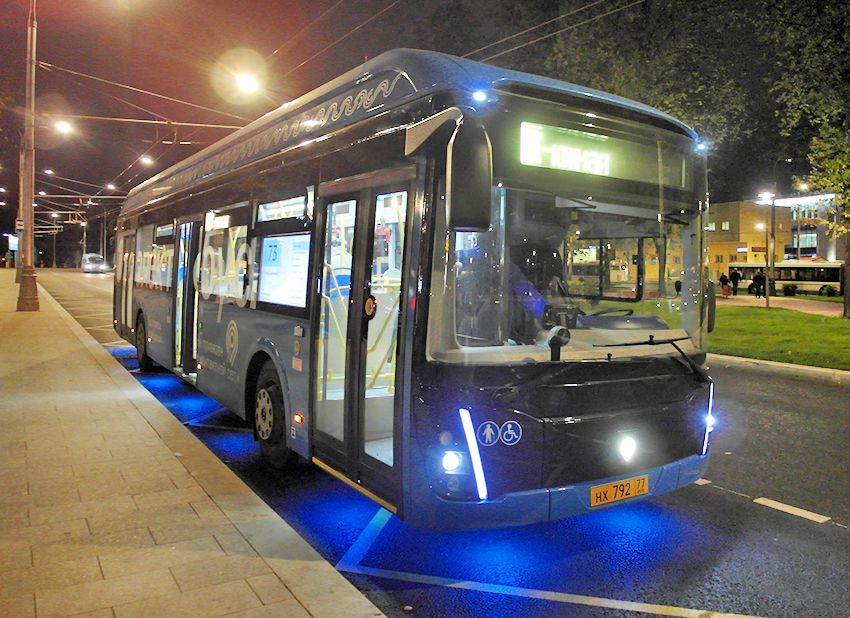
The flight is over – it's time to recharge
According to reports from different cities (for example, Ufa, Novokuznetsk and St. Petersburg) trial operation of the buses start at a number of Russian cities. However, they largely focus on an alternative model of electric bus VolgaBus CiyiRitm-12E with a range of up to 300 km, dothiepin, in particular due to low power consumption 1 kW·h on kilometer made for eliminating the power steering, the gas strut, a traditional air conditioning system and the efficient recuperative system. The bus demonstrated recently at the exhibition MOBILISTIC'18 held adjacent to MIAS 2018, however, due to the presence of only "slow" night charging (holding, however, only 5 hours) at the bus Park were not allowed to participate in the capital elektrobosna the tender as "not conforming to the basic requirements of a customer."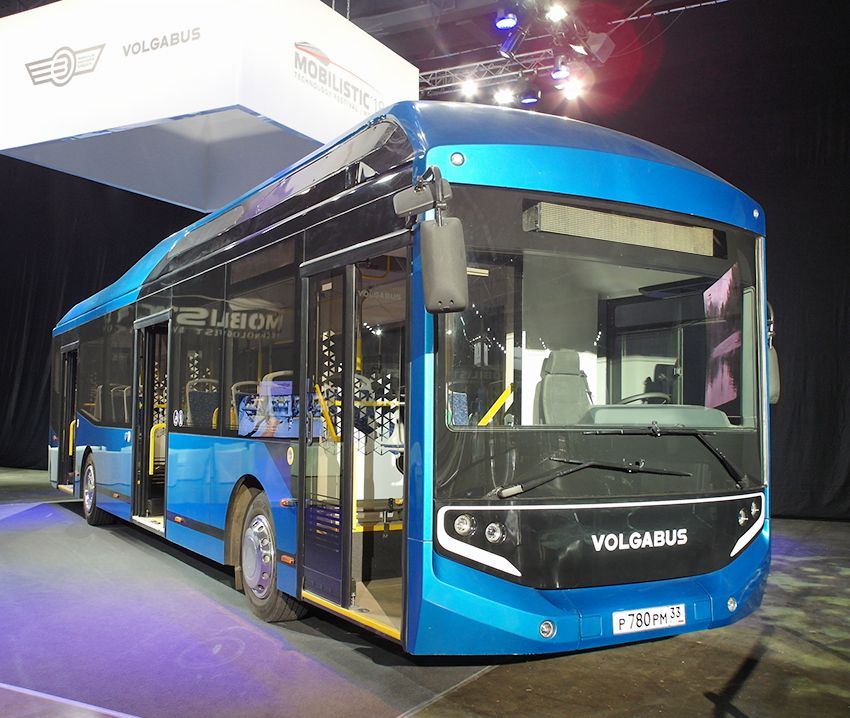
Alternative bus Volgabus CityRitm 12E in the capital "elektrobosna" tender were not included, although its 300-kilometer the power reserve and allows completely to operate successfully without intermediate recharging
Earlier demonstration tour of the cities of Siberia, made the Belarusian bus BKM E433 Vitovt Max Electro, proving that the bus is not terrible and legendary Siberian frosts.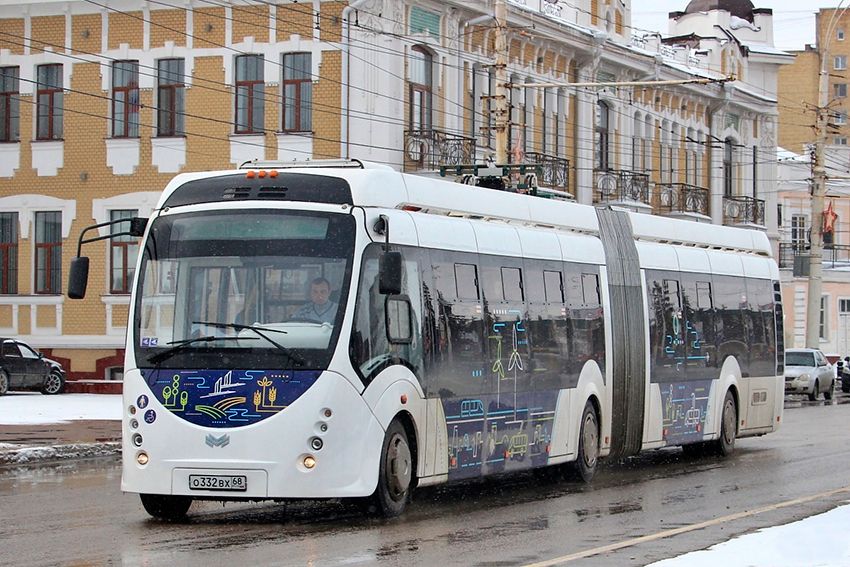
Belarusian buses BKM E433 Vitovt Max Electro not afraid of cold
According to the press service of the Mayor of Moscow until the end of 2018, the plan to run buses on six routes passing through 22 Metropolitan area.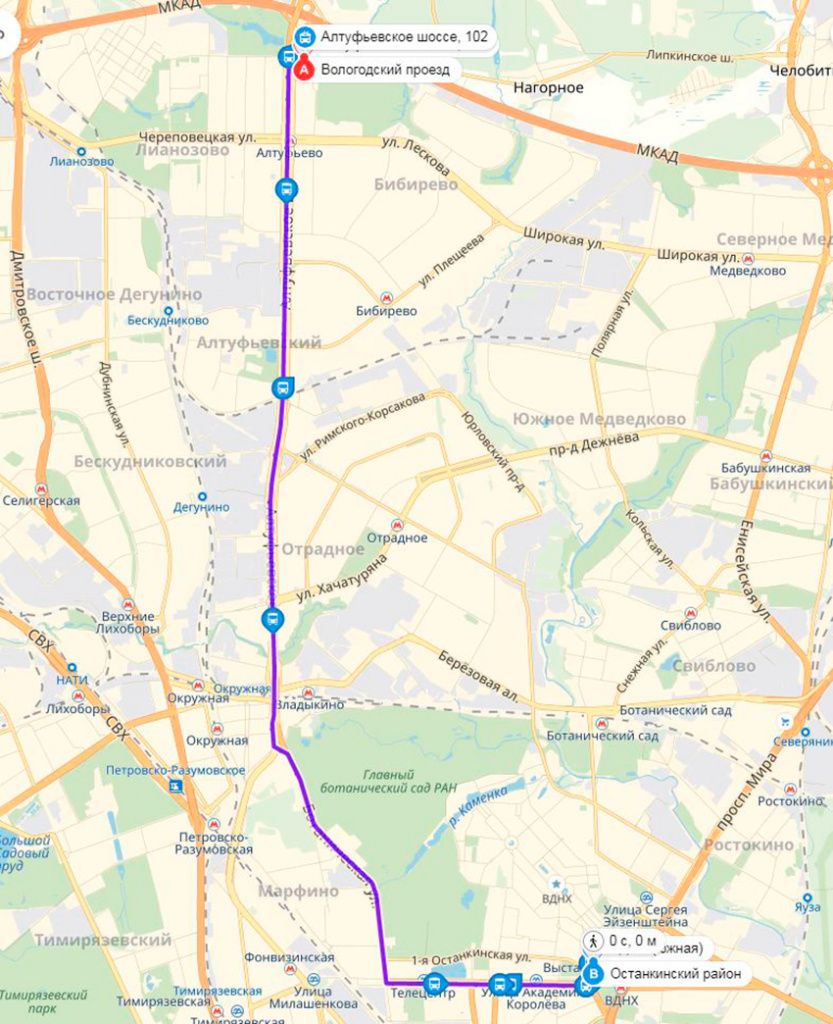
The first Metropolitan route bus (trolleybus №73)
Accordingly, the buses will be replaced:– the trolley bus №73 "6th micro-district of Bibirevo" – "ENEA (South entrance)";
bus T25 "Prospekt Budennogo" – metro station "Lubyanka" – "Polytechnical Museum";
– the trolley bus № 83-ussuriyskaya street – metro station "Preobrazhenskaya Ploschad";
– the trolley bus № 42 "Rizhsky Vokzal" – metro station "Petrovsky Park";
– the trolley bus № 76 "Kholmogorskaya street" – metro station "VDNKH";
– the trolley bus № 36 "Beskudnikovsky lane" – "1-I Ostankinsky street".
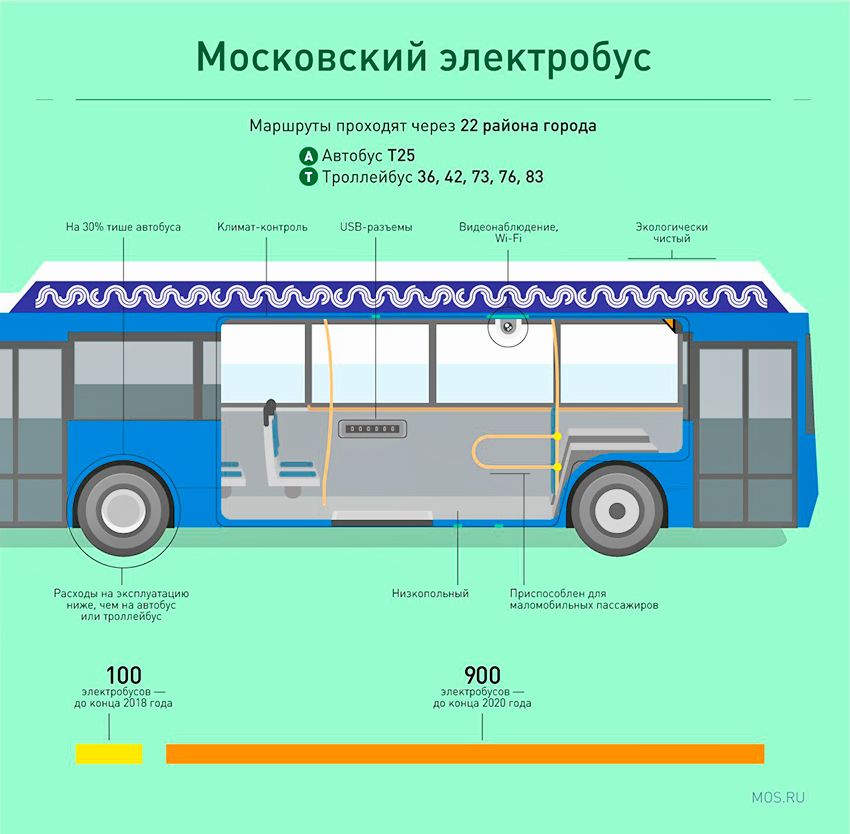
synopsis: today in the capital, 25 per cent of all transport ground transport makes electric transport – trams and trolleybuses. Further, to improve the environment in the city, trolleybuses and buses will be gradually replaced by modern buses.
Already conducted two auctions for the supply of 200 electric buses. The winners were Russia's largest automakers KAMAZ (a second-generation electric bus NefAZ-6282) and GAS (second-generation electric bus LiAZ-6474), each of which will provide 100 units of this type of modern transport and install on site the city's 62 ultra-fast charging.
By the end of this year will be held another auction supply of 100 buses. In 2019 and 2020, the city plans to purchase another 600 similar machines. Accordingly, in 2021 will be fully discontinued purchases for the Metropolitan transportation conventional diesel and CNG buses to be purchased will be exclusively electric buses..
|
|
|
Element was not found.








